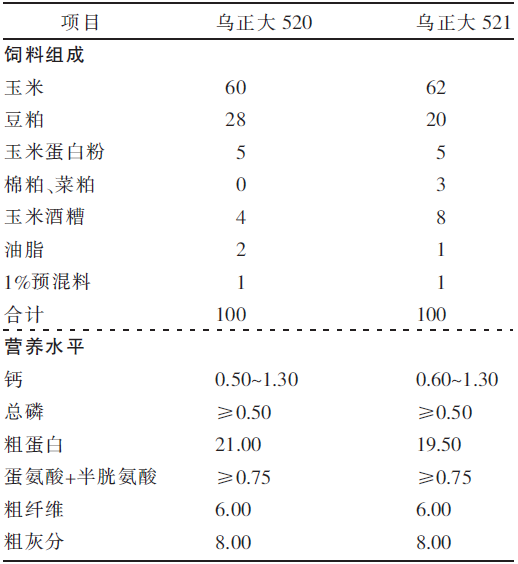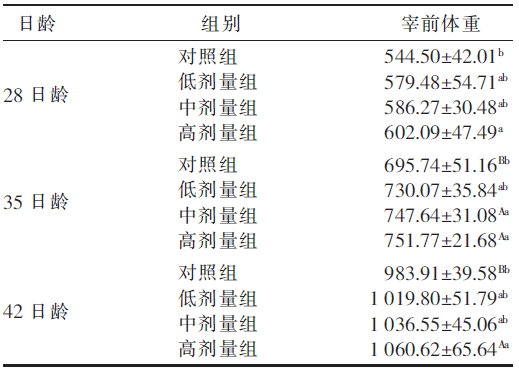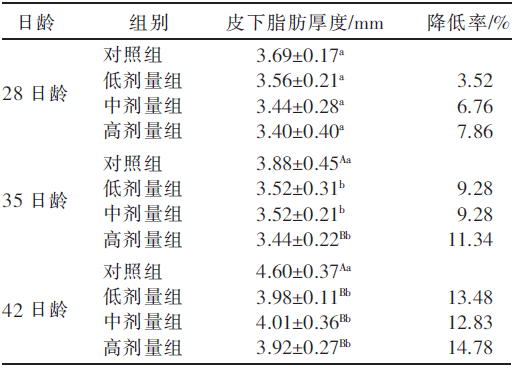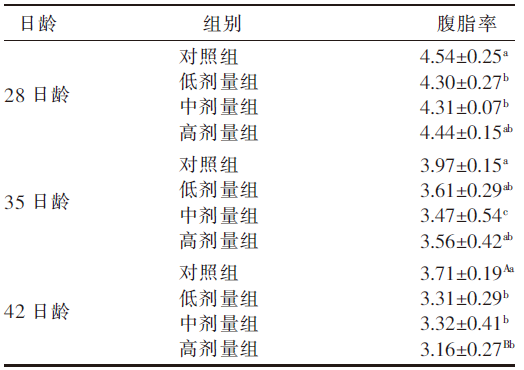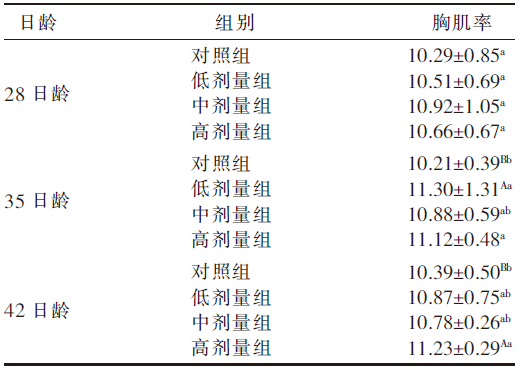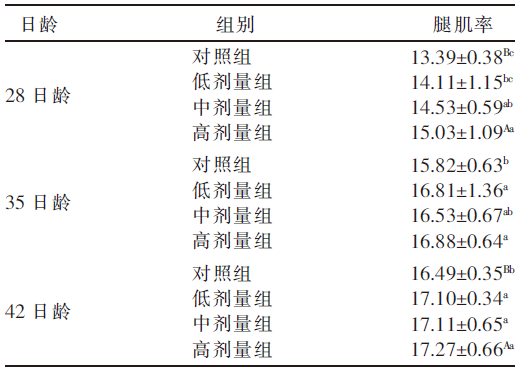畜牧与饲料科学 ›› 2022, Vol. 43 ›› Issue (6): 36-41.doi: 10.12160/j.issn.1672-5190.2022.06.006
野山杏总黄酮对三黄肉鸡屠宰性能的影响
郭元印1,2,束佳敏1,侯煜飞1,丁昱1,王健男1,宋存涛1,阿衣古丽1,戴小华1
- 1.新疆农业大学动物医学学院,新疆 乌鲁木齐 830052
2.中国农业大学动物医学学院,北京 100193
Effects of Total Flavonoids from Wild Apricot on Slaughter Performance of Sanhuang Broiler Chickens
GUO Yuan-yin1,2,SHU Jia-min1,HOU Yu-fei1,DING Yu1,WANG Jian-nan1,SONG Cun-tao1,Aygul 1,DAI Xiao-hua1
- 1. College of Veterinary Medicine,Xinjiang Agricultural University,Urumqi 830052,China
2. College of Veterinary Medicine,China Agricultural University,Beijing 100193,China
摘要:
[目的]研究不同剂量野山杏总黄酮对三黄肉鸡屠宰性能的影响。[方法]采用单因素试验设计,将96羽1日龄雌性三黄肉鸡随机分为4组,每组24羽。于14日龄开始,野山杏总黄酮低、中、高剂量组肉鸡分别灌服50、100、200 mg/(kg·BW·d)的野山杏总黄酮,对照组肉鸡灌服生理盐水,试验期42 d。28、35、42日龄时每组分别选取8羽肉鸡进行屠宰试验,测定并比较相同日龄下各组肉鸡的屠宰性能指标。[结果]高剂量野山杏总黄酮可显著或极显著(P<0.05或P<0.01)提高28、35、42日龄肉鸡宰前体重,中剂量野山杏总黄酮可极显著(P<0.01)提高35日龄肉鸡宰前体重。高剂量野山杏总黄酮分别显著(P<0.05)和极显著(P<0.01)提高35日龄和42日龄肉鸡屠宰率。中、高剂量野山杏总黄酮极显著(P<0.01)提高28日龄肉鸡半净膛率。低剂量野山杏总黄酮可极显著(P<0.01)提高28日龄肉鸡全净膛率,显著(P<0.05)提高35日龄肉鸡全净膛率;中剂量野山杏总黄酮可极显著(P<0.01)提高35日龄肉鸡全净膛率;低、中、高剂量野山杏总黄酮可极显著(P<0.01)提高42日龄肉鸡全净膛率。低、中、高剂量野山杏总黄酮可显著或极显著(P<0.05或P<0.01)降低35、42日龄肉鸡皮下脂肪厚度。高剂量野山杏总黄酮可显著(P<0.05)降低28日龄肉鸡肌间脂肪宽度,极显著(P<0.01)降低35日龄肉鸡肌间脂肪宽度;低、中、高剂量野山杏总黄酮可极显著(P<0.01)降低42日龄肉鸡肌间脂肪宽度。低剂量野山杏总黄酮可显著(P<0.05)降低28、42日龄肉鸡腹脂率,中剂量野山杏总黄酮可显著(P<0.05)降低28、35、42日龄肉鸡腹脂率,高剂量野山杏总黄酮可极显著(P<0.01)降低42日龄肉鸡腹脂率。高剂量野山杏总黄酮可显著或极显著(P<0.05或P<0.01)提高35、42日龄肉鸡胸肌率,可显著或极显著(P<0.05或P<0.01)提高28、35、42日龄肉鸡腿肌率。[结论]灌服不同剂量的野山杏总黄酮能够明显改善三黄肉鸡的屠宰性能。
中图分类号:

